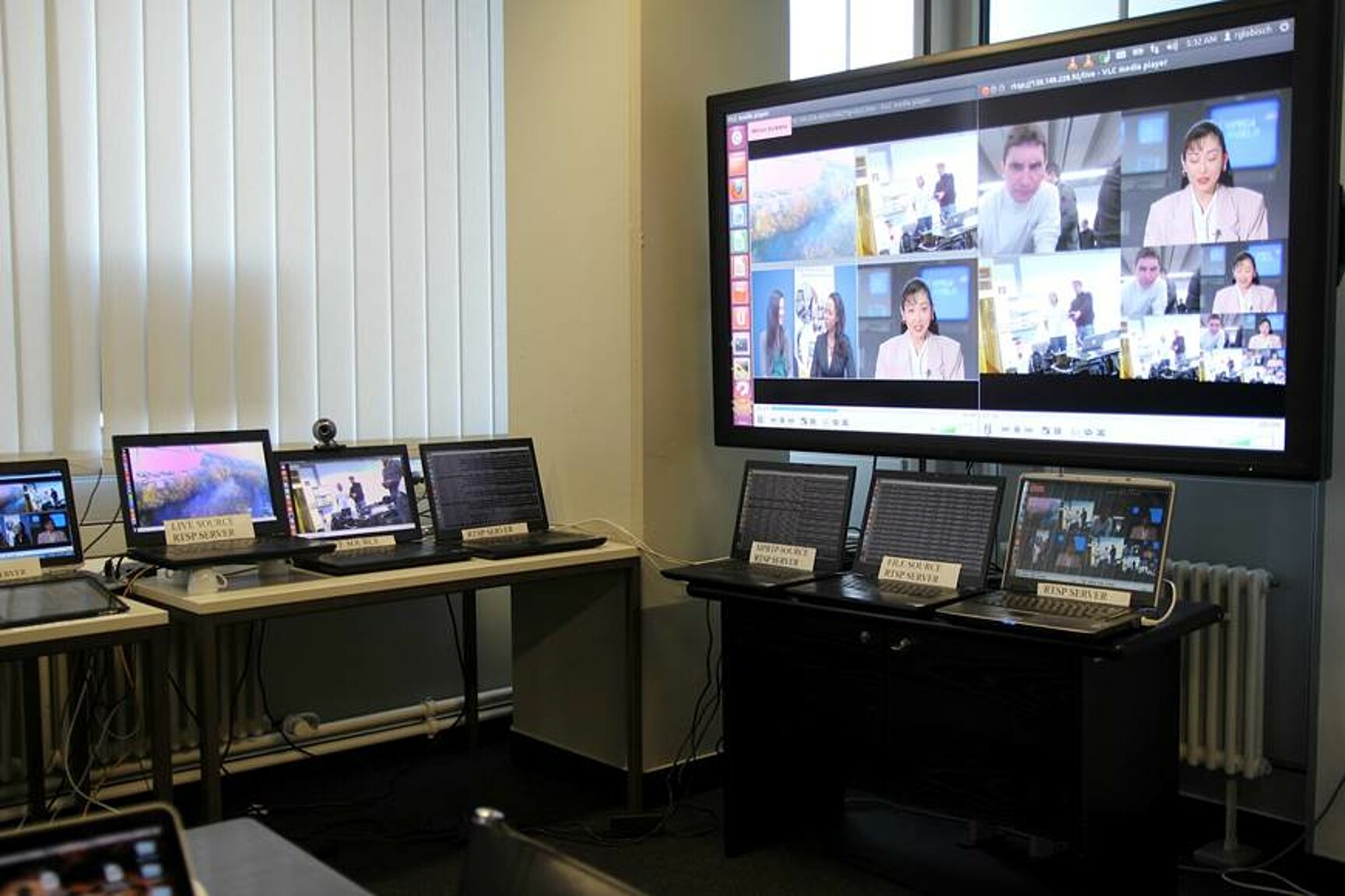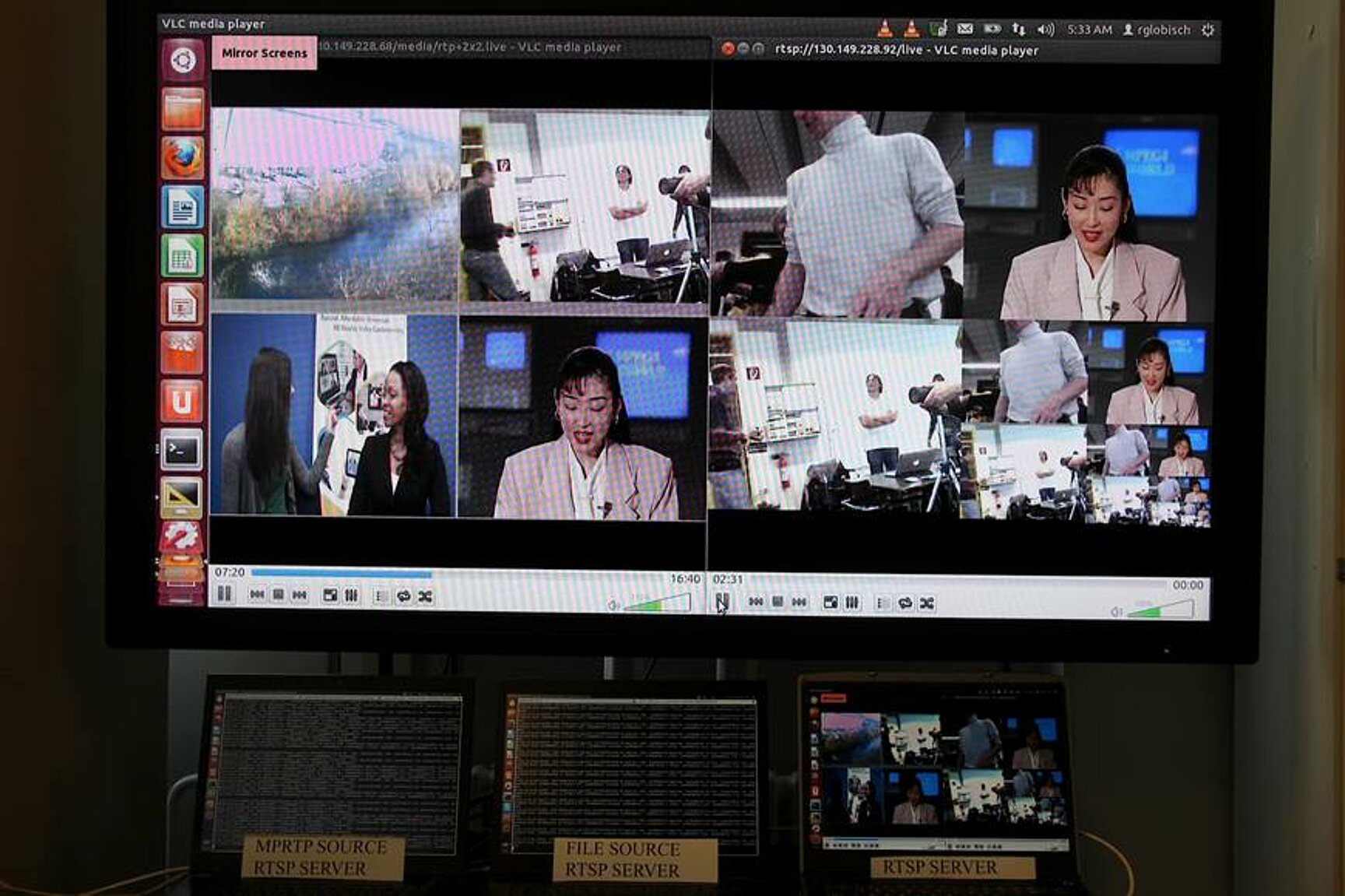Communication (EIT ICT Labs activity RCLD 11882)
Overview
Conversational services over the best-effort Internet is becoming more and more predominant with services like skype, google chat seeing wide-spread use. One of the challenges in delivering Internet conversation is to provide a service that has a quality comparable to that of the public switched telephone network (PSTN). As a best-effort network, the available bandwidth must be shared with many other classes of applications and congestion adversely affects the quality of experience. Further, conversational services have strict timing requirements where media that arrives late is of little or no use to the receiver. This creates a challenging environment for the deployment of conversational services.

EIT ICT Labs activity RCLD 11882

Project Partners
- Aalto University
- Alcatel Lucent - Bell Labs
- Fraunhofer HHI
- Siemens
- TU Berlin
- VTT


In the EIT 2011 activity (11882), a first approach for a peer supported communication system was under specification and development, published in [3].
The 2012 activity focused on streaming low-latency multimedia streaming in cloud infrastructures. The activity has contributed to the standardisation of real-time multipath media transport since 2011 [1] [2]. Further, multipath media considerations and multipath media retransmission have been researched and published in [4] and [5] respectively. In 2012 a global test-bed was set up with nodes in Berlin (Germany), Aalto (Finland), Dublin (Ireland), North Virginia, Oregon and Northern California (US), Singapore, Tokyo (Japan), Sao Paolo (Brazil) and Pretoria (South Africa). Measurements were conducted to evaluate low latency real-time streaming scenarios.
In the 2013 activity the testbed was extended to include real-time media-related capabilities using both Software as a Service (SaaS) and Platform as a Service (PaaS) approaches. These services were accessible via IETF standards based interfaces. The 2013 activity investigated how the cloud can provide complex real-time media processing or media distribution services which enable next generation media applications e.g. in which content could be customisable on a per user basis.
In the SaaS approach a media related service is hosted in the cloud and the cloud service provider provides additional value-added services such as scaling and load-balancing. Project partners Siemens and VTT provided a real-time video stitching and rebroadcasting service respectively that could be used in real-time group communication or video surveillance.
In the PaaS approach the value-added services are provided directly by the platform, and extremely fine-grained control is possible. Industry partner Alcatel-Lucent provided a real-time video stitching service using their MediaCloud technology, which provides a distributed execution environment in the cloud and manages resource allocation and utilization transparently while still meeting the low-latency requirements of a real-time service.
The 2013 activity was concluded with a successful joint project demonstrator which took place at the Technical University of Berlin in November 2013. More detailed information can be found in [6].
Figures 1 and 2 show the testbed setup of the project demonstrator, and the output of the real-time cloud-based processing platforms.
In the 2014 activity, the focus is both on the efficient cloud processing of real-time multimedia data, as well as on the efficient connection of user devices to the multimedia cloud enabling a new generation of Platform-as-a-Service applications.
Project Outputs
- Global testbed for evaluation of real-time communication in the cloud
- Evaluation of end to end, cloud-based, real-time media processing chain
- Peer/cloud node prototype development and testbed integration
- Standardisation of multipath real-time transport protocols
- 2 independent implementations of the MPRTP Internet drafts [1][2]
- Publications in the fields of multipath real-time protocols and real-time media processing in the cloud
- Open source Multipath RTP software release (scheduled for 2014)
Contributions to Standardisation
[1] V. Singh, T. Karkkainen, J. Ott, S. Ahsan, L. Eggert, "Multipath RTP (MPRTP)", IETF, Audio Video Transport - Core Group, draft-singh-avtcore-mprtp-08, January 2014, download
[2] V. Singh, J. Ott, T. Karkkainen, R. Globisch, T. Schierl, “Multipath RTP (MPRTP) attribute in Session Description Protocol”, draft-singh-mmusic-mprtp-sdp-extension-03, January 2014, download
Related Publications
[3] Ralf Globisch (Fraunhofer HHI), Varun Singh (Aalto), and Thomas Schierl (Fraunhofer HHI), "Architecture for Asymmetric P2P Group Communication", IPTComm 2011, Chicago, IL, USA, August 2011
[4] Singh V., Ahsan S., Ott J., MPRTP: Multipath Considerations for Real-time Media, Proc. of ACM Multimedia Systems (MMSys’13), Oslo, Norway, 26-28 Feb, 2013, download
[5] Ralf Globisch, Yago Sanchez, Keith Ferguson, Thomas Schierl, Thomas Wiegand, “Retransmission Timeout Estimation for Low-Delay Applications using Multipath RTP”, The 4th International Workshop on Protocols and Applications with Multi-Homing Support, Victoria, Canada, May, 2014
[6] Ralf Globisch, Varun Singh, Juergen Sienel, Peter Amon, Mikko Uitto, Thomas Schierl, “Considerations for distributed media processing in the cloud”, IEEE Multimedia Communications Technical Committee E-Letter, vol. 9, no. 2, pp. 13-16, March, 2014.
